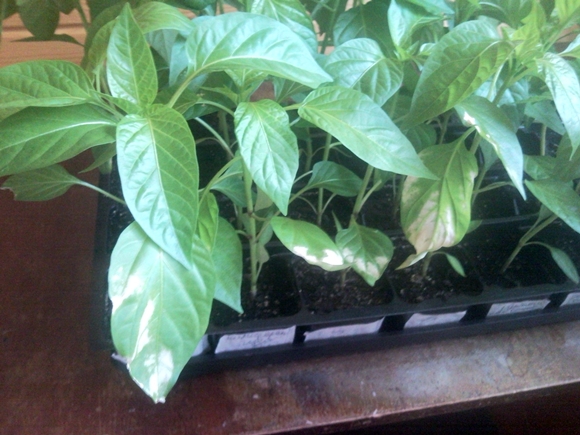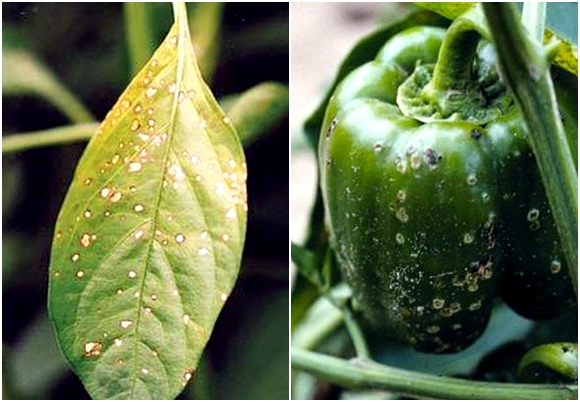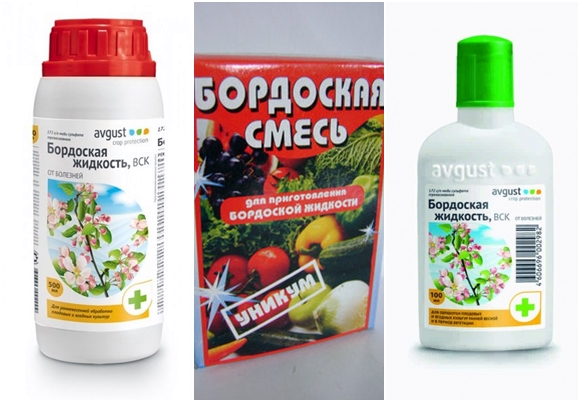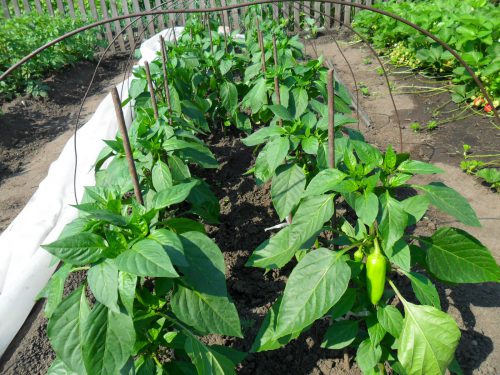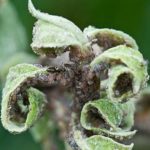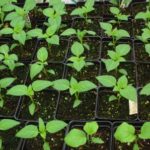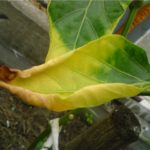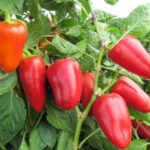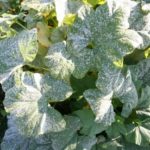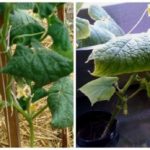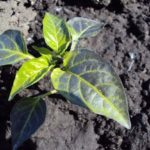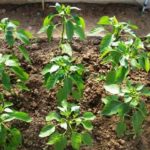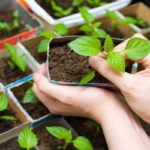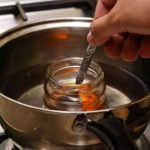One of the most common varieties of pepper is bell pepper, which is often used in preparing various dishes. This vegetable often suffers from various diseases that lead to lightening of the leaves growing on the bush. To get rid of white leaves, you need to figure out why pepper leaves turn white.
The main causes of the problem
There are several reasons that cause the leaves of pepper seedlings to change color or begin to turn white. The main reason for the occurrence of such a symptom is the appearance of one or another fungal disease.
Blackleg
The most common fungal disease that most vegetable growers encounter when growing pepper seedlings in greenhouses is blackleg. This disease can destroy most young seedlings. Especially if they are planted in a greenhouse with poor lighting and high humidity levels.
Fungal infection spreads through plant debris, poorly disinfected soil or untreated seeds. The main symptoms of blackleg include:
- the leaves on the bush became lighter and stopped being green;
- the root collar darkens;
- rotting of the plant stem.
Not only pepper seedlings are susceptible to the disease, but also an adult plant growing in a greenhouse. When adult bushes are infected, their stem gradually turns dark brown.
Verticillium wilt
Sometimes the manifestations of this disease closely resemble the symptoms cucumber mosaic. These diseases are very similar, as they disrupt the functioning of the vascular system of plants. The main symptoms of verticillium include:
- the plant began to grow slower;
- pepper leaves shrink and turn pale;
- over time, the leaf blade of the lower leaves turns yellow;
- if young bushes were infected, then ovaries cease to form on them;
- Plants infected at later stages of growth begin to shed their leaves.
Septoria
The disease damages the leaves of peppers, their fruits and stems. The fungus actively develops if cultivation is carried out in a greenhouse with a temperature of about 25 degrees and air humidity of more than 80-85%.Septoria blight first affects the lower part of the plant, causing the older leaves to suffer first. White spots appear on them and over time some of them fall off.
Then septoria rises higher and higher and affects younger leaves. At the same time, the number of spots increases significantly. They appear in all veins of the leaf blade.
When the first white spots appear on the leaves, it is necessary to treat them with special preparations that contain copper.
Alternaria blight
This disease manifests itself not only on the surface of the leaves of peppers in the greenhouse, but also on the fruits. First, small spots with a brownish tint form on them. Over time, they appear on the leaves that are located higher. They gradually increase in size and begin to merge. If you do not get rid of Alternaria in a timely manner, the green leaves will begin to dry out.
When the stems are damaged, oval-shaped brown spots form on them. Sometimes rot appears on them, causing the leaves to fall off.
Cladosporiosis
The disease affects the pepper ovary, stalks, petioles and leaves. The main symptoms of cladosporiosis include:
- the appearance of pale green spots, which are covered on the outside with a fungal coating;
- rapid spread of the disease from the bottom of the bush to the top;
- wilting and drying of leaves after transplanting seedlings.
The disease spreads through plant debris, contaminated tools and soil. A special feature of cladosperiosis is that it is not transmitted through seeds.
White rot
Quite often, this is the reason why the leaves of pepper seedlings turn white. The disease affects leaves located near the root zone of pepper.Also, over time, it appears on the fruits, which is why they become softer and waterier. The causative agent of white rot can be found in soil or plant debris.
To prevent the leaves from turning white, you need to constantly monitor air humidity and remove wilted leaves and shoots.
Disease Control Products
Having decided on the reason why pepper leaves turn white, you can begin to solve this problem. Many vegetable growers don’t know what to do when the veined leaves on their pepper bushes turn light. You can get rid of this problem with the help of special medications.
Alirin-B
This biological product helps get rid of diseases such as septoria, cladosporiosis, alternaria and late blight. It must be diluted in water before use. First, it is mixed with a small amount of liquid, after which it is poured into the total amount of water. If you need to water 10 square meters of area, add 2 tablets of the drug to 10 liters of water. There are several ways to use Alirin-B:
- Before planting seedlings in open ground. The solution is applied to the soil using a watering can and mixed with it. To do this, you can use a regular shovel or cutter.
- Addition to wells. 300 g of working solution is added to one well. To create it, you need to add one Alirina-B tablet to a liter of water.
- Use during the growing season. During this period, the bushes are fed several times a month with an interval of 4-6 days.
Bordeaux liquid
It is one of the most effective remedies against bacterial and fungal diseases. To prepare the liquid, you need to add 250 grams of quicklime and copper sulfate to 7-8 liters of water.Before use, the mixture is thoroughly mixed and filtered through gauze folded in several layers.
A properly prepared solution should not contain a lot of copper and have a light blue color. To check the acidity of the mixture, use an iron nail, which is lowered into the liquid for 3-5 minutes. If a red coating appears on it, then the mixture contains too much copper.
Quadris SK
It has protective properties, with which you can not only get rid of fungal diseases, but also prevent their occurrence.
It is recommended to use the drug after planting seedlings in the ground. In this case, this should be done in the morning or in the evening, when there are no strong gusts of wind outside. Quadris SK penetrates inside the leaf blade and protects it from fungal diseases.
The drug is used in the form of an aqueous solution. To prepare it, add 300 g of Quadris SK to 5 liters of water. The working mixture must be used within 24 hours after preparation.
Trichodermin
With the help of this biological remedy you can get rid of many fungal diseases. The composition of the drug includes the soil fungus Trichoderma.
Trichodermin is used after planting seedlings for watering pepper bushes in a greenhouse. To prepare a working solution, you need to mix a liter of water with 10 grams of the drug. When watering, the liquid should be poured under the root of each bush.
The prepared solution can be stored in the refrigerator for no more than one month.
Prevention
There are several recommendations that can be used to stop the development of fungal diseases on peppers.
Before planting seeds, they need to be disinfected. This can be done using heat treatment.To do this, several weeks before planting the seeds, they will have to be placed in a weak zinc solution for half an hour. In this case, the temperature of the liquid should be about 100 degrees. After this, the seeds can be cooled in cool water and dried.
You should also fertilize the soil. To do this, the soil must be fed 2-3 times with a warm manganese solution. To prepare it, 5-7 grams of the drug are mixed with 10 liters of water.
Conclusion
You can get rid of various fungal diseases of bell peppers yourself. To do this, it is enough to understand why pepper leaves may turn white and what medications will help solve this problem.

